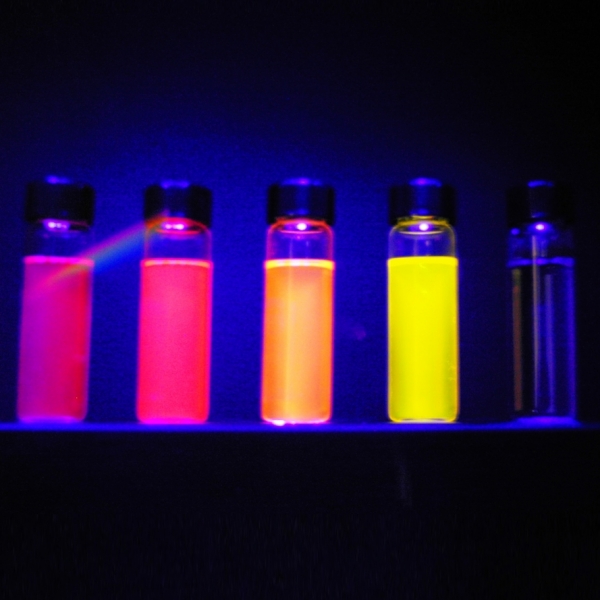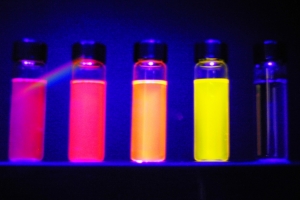
Create a selection
Nile red is a fluorescent organic dye used in various imaging studies in biology. The colour that it fluoresces is dependent on what solvent it is dissolved in. For example, in water it fluoresces strongly blue, whereas in toluene (a solvent commonly found in paint strippers) it fluoresces yellow. It is this ability to change the colour it fluoresces, depending upon the nature of its environment, that makes Nile red so useful in biological studies. What the Nile red molecules are sensing is a change in polarity of the different solvents. High polarity solvents give bluer emission, whereas less polar solvents give redder emission. The polarity of a solvent refers to the charge of its molecules. To talk of a specific polarity of a solvent is to describe what type of solid can be dissolved within it. The rule of thumb is that like dissolves like: highly polar solvents are hydrophilic (water loving) and will dissolve hydrophilic substances; whereas lipophilic (oil loving) solutions dissolve lipophilic solids. If you have ever noticed the way in which oil and water do not mix, you are observing the non-dissolving of a lipophilic substance in a hydrophilic solvent.
Sample ID: 355
Particularities
- Donated by
- Dr Klaus Suhling
- Selections
- Categories
- Vegetable
- Curiosities
- Fluorescent
- Relationships
- Biology | Colour Change | Fluorescent | Molecule | Sensing
Add materials you find interesting to your own selections.
Use the  button to select a material and get started.
button to select a material and get started.

